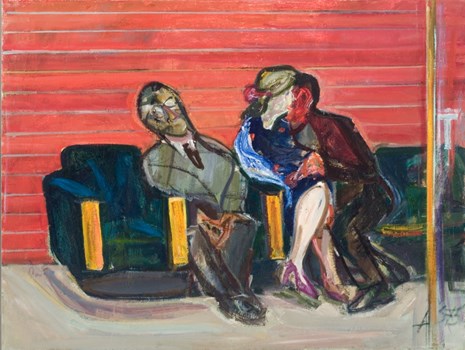Arvydas Šaltenis was one of the artists whose work revolutionised Lithuanian painting in the 1970s, and stripped the Soviet reality of romantic representation. Works and exhibitions by an informal group of his fellow painters, Algimantas Švėgžda, Kostas Dereškevičius, and Algimantas Kuras brought about a breakthrough in art with their new principles. Their 'manifesto' was delivered in the language of painting: the new ideology emerged through intricately structured compositions and almost jarring colour schemes. But the most shocking aspect was their attention to normally undeclared aspects of Soviet life. Their paintings rejected monumentality and decorativeness. They showed mundane life, people with personal qualities which were often far from attractive. Their subject was the person on the margin, who did not feature in the official newsreels and the pages of the daily newspaperTiesa(Truth). This person, according to Kostas Dereškevičius, proved to be unhappy and awkward, depressed and funny. The environment was also, in ecological terms, far from the ideal of neat landscapes: it contained the debris of machinery and the heaps of garbage that we see in paintings by Kuras.
In the Post Officealso presents unbeautified sides of everyday life. It is a genre composition, which should be read on a higher, philosophical level. The imbalanced, asymmetrical composition, colour contrast and expressive brushwork help to create a picture in which objects of grim reality and twisted figures merge into one grotesque totality, thus revealing the oppressive absurdity of the everyday and the existential anxiety of the individual.



